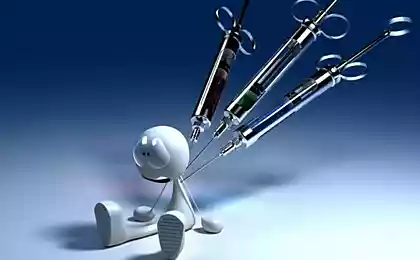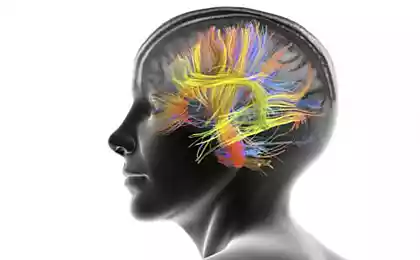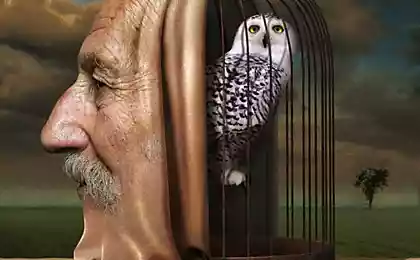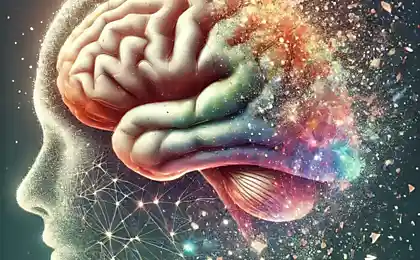505
How the brain predicts the future
Imagine that you play poker. Cards handed out, your opponent traded in one and is now ready to play; you are also ready to fight. You stare at his face, I see that it is for visual convenience, rearranged a few cards in your set, finally opened his mouth and going to bet.
The simplest prediction is the fact that he's going to call a bet. After all, there will he a hundred years so to sit here and my mouth opened. Harder to guess what he has to say. And even harder to understand he was bluffing.
Guess different people are better or worse; scientists have long understood that the brain is constantly running some sort of complicated mechanism for this task. Professor Jeff Sachs of the Washington University (St. Louis, USA) conducted a study on brain mechanisms of working with the future and found a specific brain center responsible for this ability. It turned out, the whole point here in the ability to notice the boundaries between microevents.
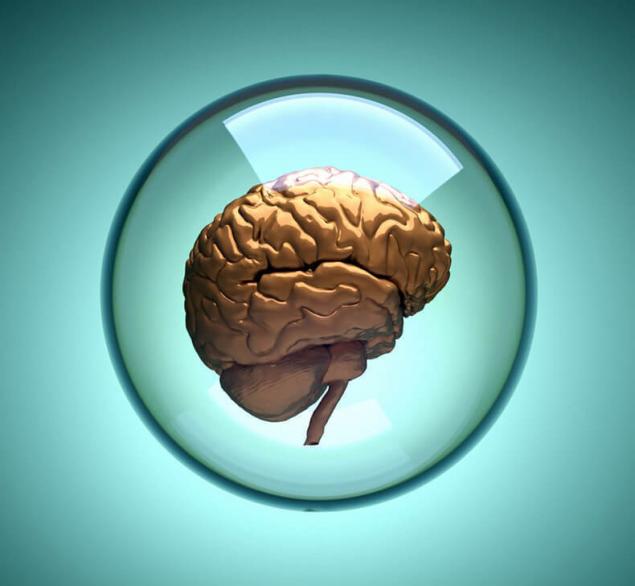
The researchers showed volunteers a video, which happened everyday actions: machine wash or build models from LEGO. The video then paused, and volunteers were asked the question: what happens next?
And the pause created in two ways: either in the middle of routine actions, or 2.5 seconds before the action is complete. If the pause occurred in the middle of the action, nothing special in the brain did not happen; but if at the turn, the screen of the scanner flashed centers located in the midbrain, collectively referring to the so-called substantia nigra (the name coined by early anatomists, who noticed that the darker — due to accumulations of melatonin).
"We know that these centres have two roles. The first — term memory. This is natural: when faced with an unexpected event — for example, by crashing his forehead into unexpectedly low-hanging kitchen lamp — I have to remember where it hangs, that it is not repeated. The second role is the operational restructuring of the brain, activation of attention, perception. And this role is particularly interesting," explains the Professor.
Sachs leads a philosophical parallel: "a hundred years ago, the psychologist William James wrote: "Consciousness is a continuous stream [...] in which the idea of a single subject is separated from thoughts about the other subject is not more than knee bamboo are separated from each other by means of a seam". These seams are most important for successful predictions".
Explain the example of poker. If I'm an inexperienced player, for me all the fuss and gestures to my partner before the announcement of the bet is a single action, smooth knee bamboo. The seam occurs only at the end when the player is going to say something. Before that my mind is dealing with the hypothesis "now it is tricky, just grunt and call a bet". Upon the occurrence of a seam fires a black substance and requires consciousness to update the hypothesis ' what happens next?
The reality is the more experienced player consists of much more smooth knees and joints: every second he has activated the substantia nigra. This is a deeply subconscious process, but the black substance all the time pulling the bark (mind) and asks whether it is time to rebuild hypothesis. The enemy shifted a few cards in the fan — seam! — eyes closed — seam! — changed the position of the seam!
Each of us has our own pattern of smooth bamboo knees and joints; we update hypotheses about the future with different frequencies and based on different information. In the end the skilled player will live up to the same line ad rates — from a completely different hypothesis about future events compared to inexperienced.
10 scientific serials, which will raise your intellectual level
Scientists about the brain: the best of TED talks with a Russian voice acting
Sachs explains: "Success depends on two factors: attention and experience. But if the black substance didn't work, we need to analysis generally is not performed, subjectively we may feel that nothing important is happening, not what to guess. Consciousness does not see that the period of uncertainty and that it is necessary to update the hypotheses.
Hence the plan the following: "There are two ways in which to develop their abilities to the prediction: the acquisition of experience and training observation. We are working on a new series of experiments where trained a group of volunteers attention to see how it will affect the work of their substantia nigra," said Jeff Sachs.published
Source: vk.com/etorabotaet?w=wall-37160097_64548
The simplest prediction is the fact that he's going to call a bet. After all, there will he a hundred years so to sit here and my mouth opened. Harder to guess what he has to say. And even harder to understand he was bluffing.
Guess different people are better or worse; scientists have long understood that the brain is constantly running some sort of complicated mechanism for this task. Professor Jeff Sachs of the Washington University (St. Louis, USA) conducted a study on brain mechanisms of working with the future and found a specific brain center responsible for this ability. It turned out, the whole point here in the ability to notice the boundaries between microevents.

The researchers showed volunteers a video, which happened everyday actions: machine wash or build models from LEGO. The video then paused, and volunteers were asked the question: what happens next?
And the pause created in two ways: either in the middle of routine actions, or 2.5 seconds before the action is complete. If the pause occurred in the middle of the action, nothing special in the brain did not happen; but if at the turn, the screen of the scanner flashed centers located in the midbrain, collectively referring to the so-called substantia nigra (the name coined by early anatomists, who noticed that the darker — due to accumulations of melatonin).
"We know that these centres have two roles. The first — term memory. This is natural: when faced with an unexpected event — for example, by crashing his forehead into unexpectedly low-hanging kitchen lamp — I have to remember where it hangs, that it is not repeated. The second role is the operational restructuring of the brain, activation of attention, perception. And this role is particularly interesting," explains the Professor.
Sachs leads a philosophical parallel: "a hundred years ago, the psychologist William James wrote: "Consciousness is a continuous stream [...] in which the idea of a single subject is separated from thoughts about the other subject is not more than knee bamboo are separated from each other by means of a seam". These seams are most important for successful predictions".
Explain the example of poker. If I'm an inexperienced player, for me all the fuss and gestures to my partner before the announcement of the bet is a single action, smooth knee bamboo. The seam occurs only at the end when the player is going to say something. Before that my mind is dealing with the hypothesis "now it is tricky, just grunt and call a bet". Upon the occurrence of a seam fires a black substance and requires consciousness to update the hypothesis ' what happens next?
The reality is the more experienced player consists of much more smooth knees and joints: every second he has activated the substantia nigra. This is a deeply subconscious process, but the black substance all the time pulling the bark (mind) and asks whether it is time to rebuild hypothesis. The enemy shifted a few cards in the fan — seam! — eyes closed — seam! — changed the position of the seam!
Each of us has our own pattern of smooth bamboo knees and joints; we update hypotheses about the future with different frequencies and based on different information. In the end the skilled player will live up to the same line ad rates — from a completely different hypothesis about future events compared to inexperienced.
10 scientific serials, which will raise your intellectual level
Scientists about the brain: the best of TED talks with a Russian voice acting
Sachs explains: "Success depends on two factors: attention and experience. But if the black substance didn't work, we need to analysis generally is not performed, subjectively we may feel that nothing important is happening, not what to guess. Consciousness does not see that the period of uncertainty and that it is necessary to update the hypotheses.
Hence the plan the following: "There are two ways in which to develop their abilities to the prediction: the acquisition of experience and training observation. We are working on a new series of experiments where trained a group of volunteers attention to see how it will affect the work of their substantia nigra," said Jeff Sachs.published
Source: vk.com/etorabotaet?w=wall-37160097_64548





